India customers to view on amazon.in
Safest Cleaning Products for Cat Households
As a cat owner, maintaining a clean and healthy home environment is crucial for your feline friend’s well-being. However, traditional cleaning supplies often contain harsh chemicals that can harm your cat’s health. It’s essential to choose non-toxic cleaning solutions that are safe for your pet.
- Why Traditional Cleaning Products Can Harm Your Cat
- Common Toxic Ingredients in Regular Cleaners
- How Cats Are Uniquely Vulnerable to Cleaning Chemicals
- The Science Behind Chemical Sensitivity in Felines
- Understanding Your Cat’s Exposure to Household Cleaners
- Dangerous Ingredients to Avoid in Cleaning Products
- How to Identify Cat-Safe Cleaning Products
- Safest Cleaning Products for Cat Households: Our Top Recommendations
- Best Pet-Safe Disinfectants That Actually Work
- Enzyme-Based Disinfectants
- Plant-Based Antimicrobial Solutions
- Steam Cleaning Options
- Hydrogen Peroxide Solutions
- Eco-Friendly and Cat-Safe Laundry Products
- Natural DIY Cleaning Solutions for Cat Owners
- Vinegar-Based Cleaners
- Baking Soda Applications
- Essential Oil Safety Considerations
- Lemon Juice Solutions
- Cat-Friendly Cleaning Tools and Equipment
- Special Cleaning Challenges for Cat Owners
- Emergency Procedures for Cleaning Product Exposure
- Immediate Steps to Take
- When to Contact Your Veterinarian
- Creating a Pet Poison Control Plan
- Common Symptoms of Chemical Exposure
- Conclusion
- FAQ
- What makes a cleaning product safe for cat households?
- Are eco-friendly cleaning products always safe for cats?
- Can I use disinfectants around my cat?
- How can I minimize my cat’s exposure to cleaning chemicals?
- What are some common household cleaners that are toxic to cats?
- Can I make my own cleaning products using natural ingredients?
- What should I do if my cat ingests a cleaning product?
- Are there any certifications I should look for when choosing cleaning products for my cat household?
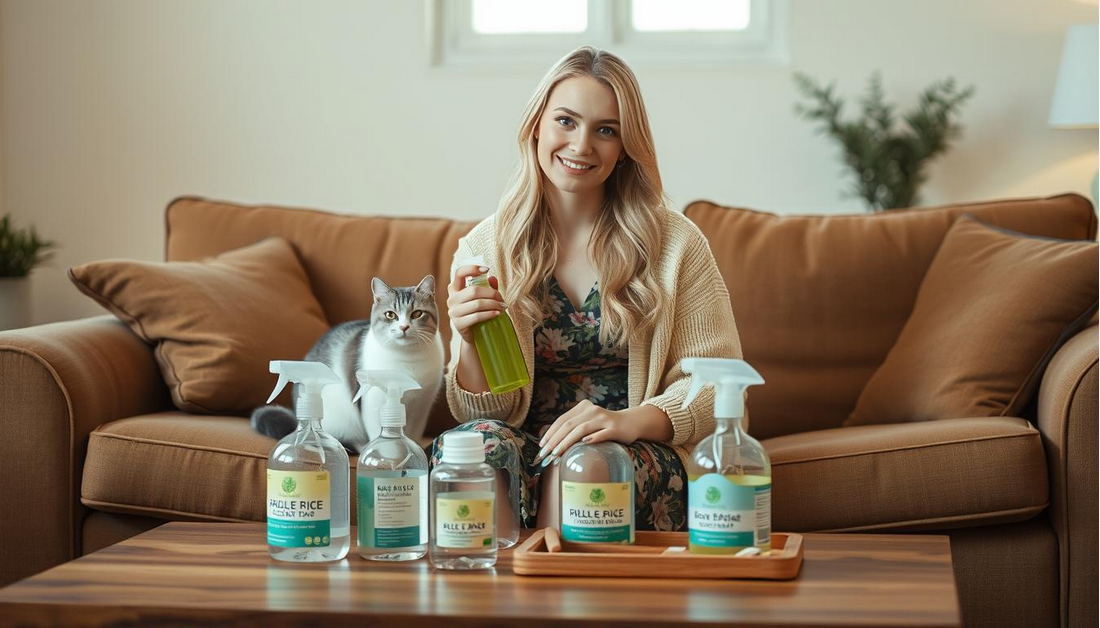
In this article, we will explore the safest options for your home, providing you with expert-approved pet-safe cleaning solutions to ensure a clean and healthy environment for your cat.
Key Takeaways
- Understanding the risks associated with traditional cleaning products
- Identifying non-toxic and pet-safe cleaning solutions
- Expert recommendations for the safest cleaning products
- Tips for maintaining a clean and healthy home environment
- Benefits of switching to eco-friendly cleaning supplies
Why Traditional Cleaning Products Can Harm Your Cat
Many cat owners are unaware that common household cleaners can pose a significant threat to their feline friends. Traditional cleaning products contain a variety of chemicals that can be toxic to cats, who are particularly vulnerable due to their grooming habits and sensitive respiratory systems.
Common Toxic Ingredients in Regular Cleaners
Regular cleaning products often contain ingredients like phenols, ammonia, and chlorine, which can be harmful to cats. These chemicals can cause a range of health problems, from skin irritation and allergic reactions to more severe conditions like organ damage.
- Phenols: Can cause liver and kidney damage
- Ammonia: Can irritate the eyes, nose, and throat
- Chlorine: Can cause respiratory problems and skin irritation
How Cats Are Uniquely Vulnerable to Cleaning Chemicals
Cats are more susceptible to the harmful effects of cleaning chemicals due to their grooming habits. They frequently lick their fur and paws, which can lead to the ingestion of toxic substances. Additionally, their smaller body size means that even small amounts of these chemicals can be dangerous.
The Science Behind Chemical Sensitivity in Felines
The science behind chemical sensitivity in cats is complex and involves the interaction of various factors, including the cat’s metabolism, the concentration of the chemical, and the duration of exposure. Cats have a unique physiology that makes them more sensitive to certain chemicals, and understanding this is crucial for cat owners who want to keep their pets safe.
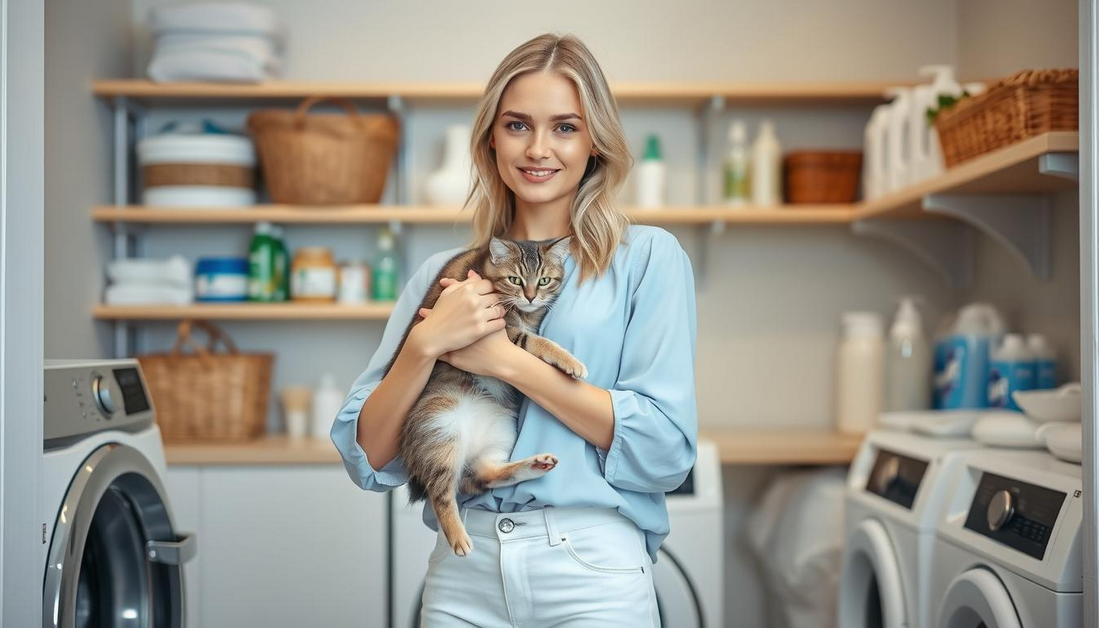
Understanding Your Cat’s Exposure to Household Cleaners
As cat owners, it’s crucial to understand how our feline friends come into contact with household cleaners. Cats can be exposed to these chemicals through various means, making it essential to recognize the risks associated with different cleaning products.
The exposure can occur in several ways, and being aware of these can help you minimize the risks. Here are some key factors to consider:
Paw Pad Absorption
Cats can absorb chemicals through their paw pads, especially when they walk on freshly cleaned floors. Gentle cleaning products for cat owners are essential to reduce this risk.
Grooming and Ingestion Risks
During grooming, cats can ingest chemicals that have settled on their fur. Using safe disinfectants for cat lovers can help minimize this risk.
Respiratory Sensitivity
Cats are also vulnerable to inhaling chemical fumes from cleaning products, which can affect their respiratory system. Opting for safe cleaning products for cats can help reduce this exposure.
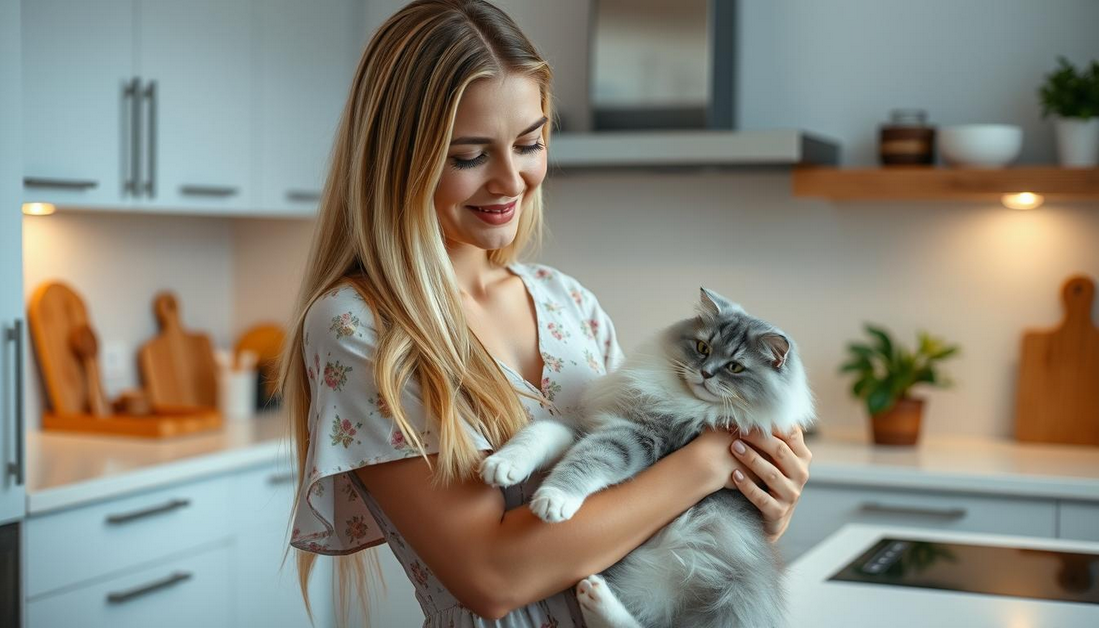
By understanding these risks, you can take steps to create a safer environment for your cat. Choosing the right cleaning products is a crucial step in protecting your pet’s health.
Dangerous Ingredients to Avoid in Cleaning Products
As a cat owner, you’re likely aware that your furry friends can be sensitive to certain chemicals, but do you know which ingredients to avoid in cleaning products? Certain ingredients in cleaning products can be hazardous to your cat’s health. Avoiding products that contain these toxic chemicals is crucial to maintaining a safe and healthy home environment.
Phenols and Cresols
Phenols and cresols are commonly found in disinfectants and cleaning products. These chemicals can cause liver damage and respiratory issues in cats. Exposure to phenol can occur through skin contact or inhalation, making it essential to avoid products containing these ingredients.
Ammonia and Chlorine
Ammonia and chlorine are two of the most toxic ingredients found in cleaning products. When mixed with other chemicals, they can release toxic fumes that can cause respiratory distress in cats. Ammonia can also irritate your cat’s eyes, skin, and mucous membranes.
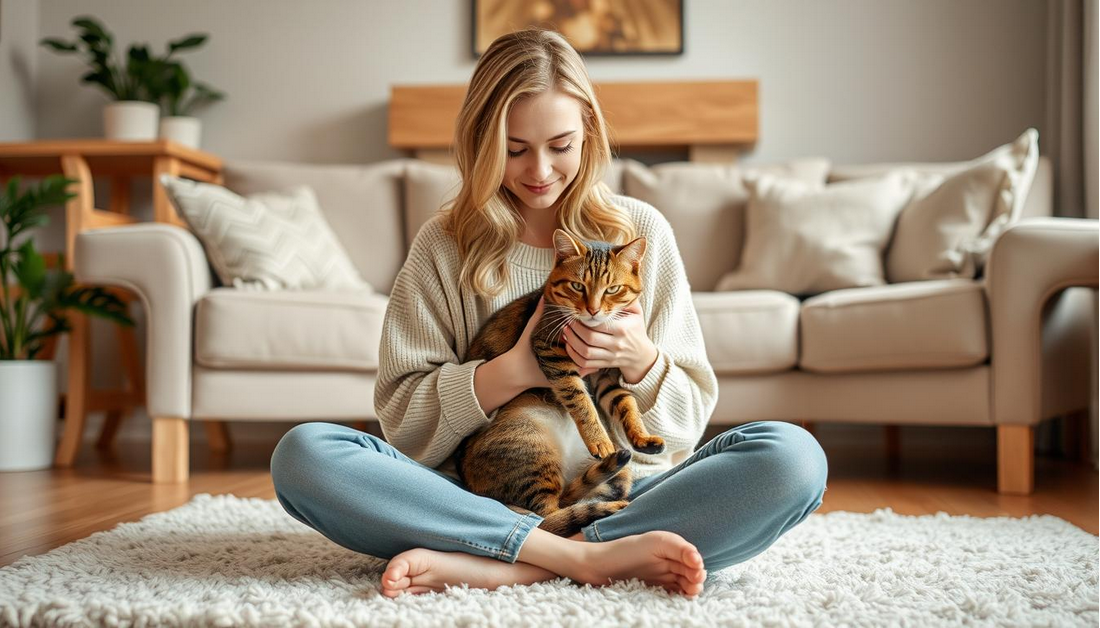
Glycol Ethers
Glycol ethers are solvents commonly used in cleaning products. They can cause reproductive issues and developmental problems in cats. Exposure to glycol ethers can occur through skin contact or inhalation, making it crucial to avoid products containing these chemicals.
Phthalates and Formaldehyde
Phthalates and formaldehyde are known carcinogens that can cause a range of health problems in cats, including reproductive issues and cancer. These chemicals can be found in various cleaning products, including air fresheners and scented cleaners.
To keep your home safe for your cat, always check the ingredient list before purchasing cleaning products. Look for pet-safe and non-toxic certifications to ensure that the products you choose are safe for your furry friends.
- Always read the label carefully
- Choose products with natural ingredients
- Avoid products with strong fragrances or dyes
How to Identify Cat-Safe Cleaning Products
With so many cleaning products on the market, choosing the ones that are safe for your feline friends is crucial. To make informed decisions, you need to understand what makes a cleaning product safe for your cat.
Certifications and Labels to Look For
One way to ensure a cleaning product is safe for your cat is to look for certifications from reputable organizations. For example, products labeled with the Safer Choice logo by the U.S. Environmental Protection Agency (EPA) have met certain standards for human and environmental health. Similarly, products certified by Leaping Bunny or Green Seal indicate a commitment to safety and sustainability.
| Certification | Description |
|---|---|
| Safer Choice | EPA’s label for products with safer chemicals |
| Leaping Bunny | Certification for cruelty-free products |
| Green Seal | Certification for environmentally friendly products |
Decoding Ingredient Lists
Understanding what’s in your cleaning products is vital. Look for products with transparent labeling that lists all ingredients. Be wary of products with vague terms like “fragrance” or “surfactants,” as these can hide harmful chemicals. Opt for products that clearly state their ingredients and avoid those with known toxic substances.
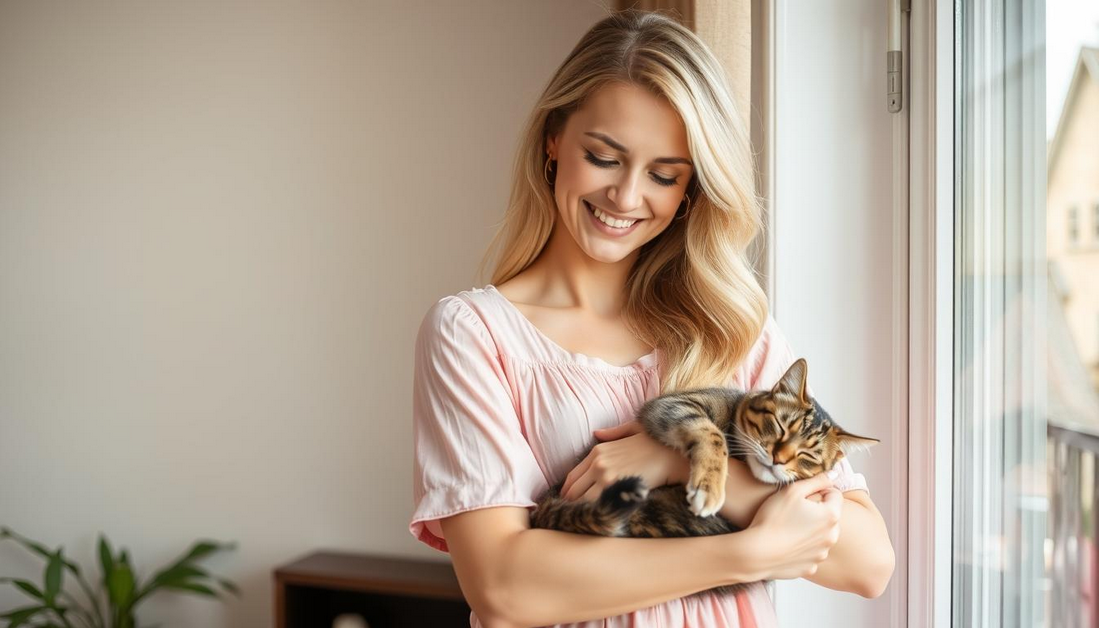
Manufacturer Claims vs. Reality
Be cautious of manufacturer claims that seem too good to be true. Some products may claim to be “natural” or “pet-friendly” without backing these claims with evidence. Check for third-party verification and read reviews from other pet owners to get a more accurate picture of a product’s safety.
“Always read the label carefully and look for third-party certifications to ensure the product is safe for your cat.”
Safest Cleaning Products for Cat Households: Our Top Recommendations
When it comes to keeping your home clean and safe for your feline friends, choosing the right cleaning products is crucial. Cat owners need to be vigilant about the products they use, as many conventional cleaning solutions contain harsh chemicals that can harm cats.
Multi-Surface Cleaners
For everyday cleaning, multi-surface cleaners are a staple. Here are some top recommendations that are safe for cat households:
- Seventh Generation Free & Clear: This plant-based cleaner is free from dyes, fragrances, and optical brighteners, making it gentle on surfaces and safe for pets.
- Method All-Purpose Cleaner: Method’s cleaner is biodegradable and comes in a variety of scents that are safe for cats.
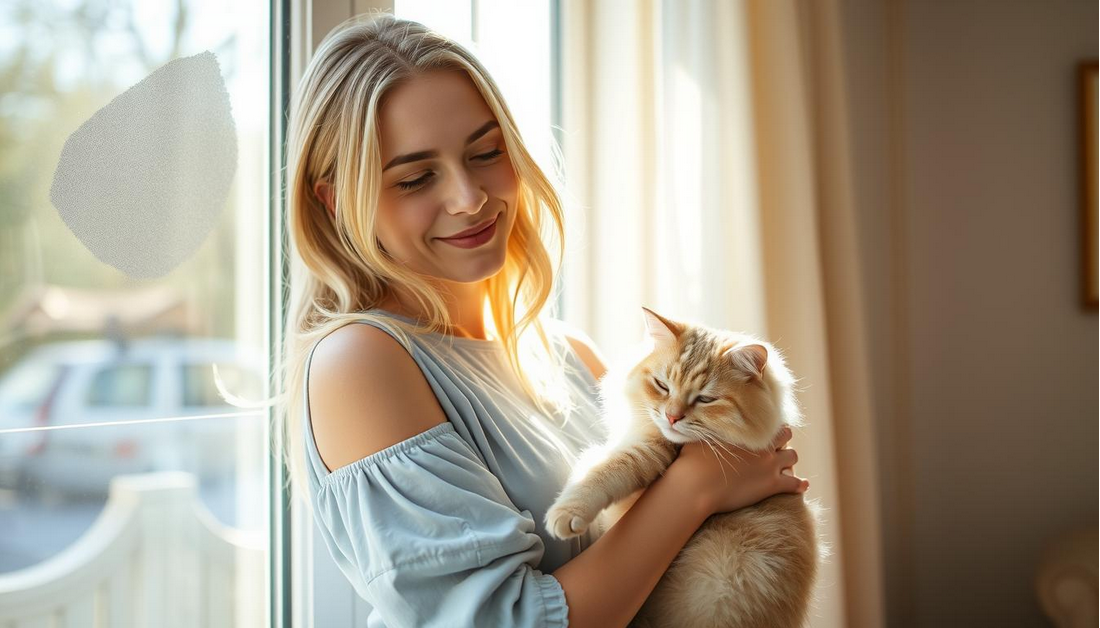
Floor Cleaners
For keeping your floors clean and safe, consider these eco-friendly floor cleaners:
- Eco-Me Natural Floor Cleaner: Made with natural ingredients, this cleaner is free from harsh chemicals and safe for pets.
- Better Life Floor Cleaner: This cleaner is non-toxic and biodegradable, making it a great choice for cat owners.
Bathroom Cleaners
When it comes to bathroom cleaners, it’s essential to choose products that are effective yet safe for your cats. Look for products with natural ingredients and avoid those with bleach or ammonia.
Kitchen Cleaners
For the kitchen, opt for cleaners that are tough on grease but gentle on surfaces and pets. Many eco-friendly brands offer kitchen cleaners that are safe for cat households.
By choosing the right cleaning products, you can keep your home clean and your cats safe. Always read labels carefully and look for certifications that indicate a product is pet-safe.
Best Pet-Safe Disinfectants That Actually Work
Creating a clean and safe home for your cat involves choosing the right disinfectants. Disinfectants are crucial for maintaining a hygienic environment, but many contain harsh chemicals that can harm your cat. In this section, we’ll explore the best pet-safe disinfectants that actually work.
Enzyme-Based Disinfectants
Enzyme-based disinfectants are a great option for pet owners. They work by breaking down organic matter, eliminating odors and stains. These disinfectants are non-toxic and biodegradable, making them safe for your cat.
Plant-Based Antimicrobial Solutions
Plant-based antimicrobial solutions are another effective option. They utilize natural ingredients like essential oils to combat germs and bacteria. These solutions are often free from harsh chemicals and are gentle on surfaces.
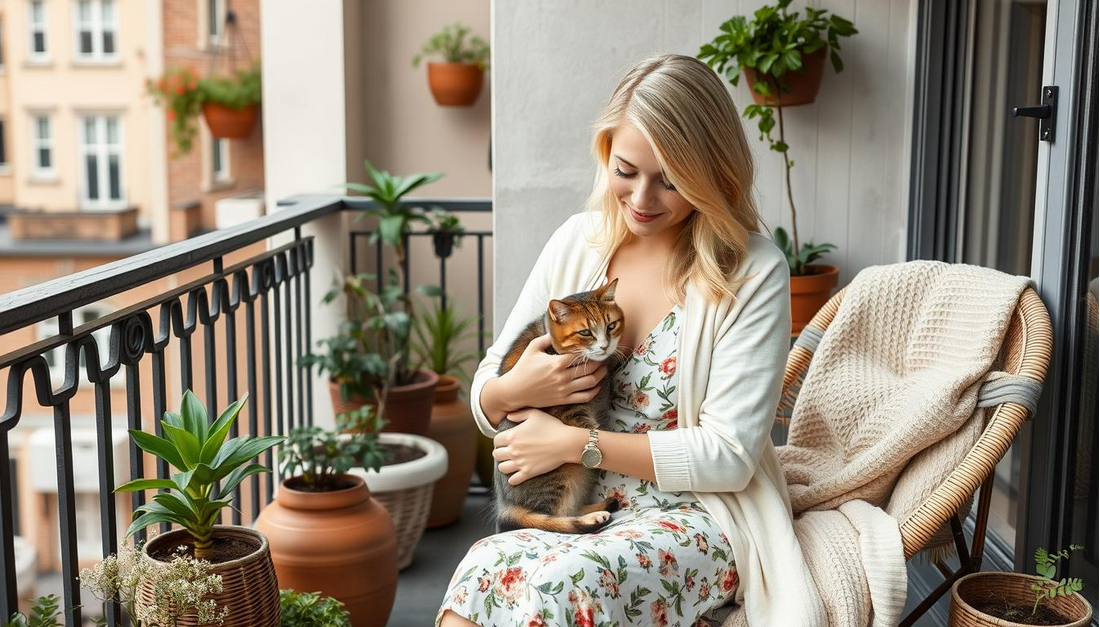
Steam Cleaning Options
Steam cleaning is a chemical-free way to disinfect your home. It uses high-temperature steam to kill bacteria, viruses, and germs. Steam cleaning is effective on various surfaces, including floors, carpets, and upholstery.
Hydrogen Peroxide Solutions
Hydrogen peroxide solutions are a popular choice for pet owners. They are non-toxic and environmentally friendly. Hydrogen peroxide works by releasing oxygen to kill bacteria and germs.
| Disinfectant Type | Key Features | Safety for Cats |
|---|---|---|
| Enzyme-Based | Breaks down organic matter, non-toxic, biodegradable | Safe |
| Plant-Based | Utilizes natural ingredients, free from harsh chemicals | Safe |
| Steam Cleaning | Chemical-free, effective on various surfaces | Safe |
| Hydrogen Peroxide | Non-toxic, environmentally friendly | Safe |
When choosing a disinfectant, it’s essential to read labels carefully and look for certifications that indicate the product is safe for pets. By opting for pet-safe disinfectants, you can maintain a clean and healthy home for your cat.
Eco-Friendly and Cat-Safe Laundry Products
Ensuring the laundry products you use are safe for your cat is crucial for their health and wellbeing. Cats often come into contact with their bedding and clothing that has been washed with various detergents and fabric softeners, which can contain harmful chemicals.
When choosing laundry products, it’s essential to opt for eco-friendly and cat-safe options. These products are designed to be gentle on fabrics while also being safe for your pets.
Detergents Safe for Pet Bedding
Look for detergents that are free from harsh chemicals like phthalates, ammonia, and chlorine. Some popular eco-friendly detergents include:
- Seventh Generation Concentrated Laundry Detergent
- Ecover Laundry Detergent
- MethaDetergent
Stain and Odor Removers
For tough stains and odors, consider using natural stain removers. Some effective options include:
- Baking soda and white vinegar for natural stain removal
- Enzyme-based stain removers like Biokleen Bac-Out Stain & Odor Remover
Fabric Softener Alternatives
Instead of traditional fabric softeners, try using:
- Wool dryer balls for a natural softening effect
- Vinegar as a fabric softener alternative
| Product | Eco-Friendly | Cat-Safe |
|---|---|---|
| Seventh Generation Concentrated Laundry Detergent | Yes | Yes |
| Ecover Laundry Detergent | Yes | Yes |
| Biokleen Bac-Out Stain & Odor Remover | Yes | Yes |
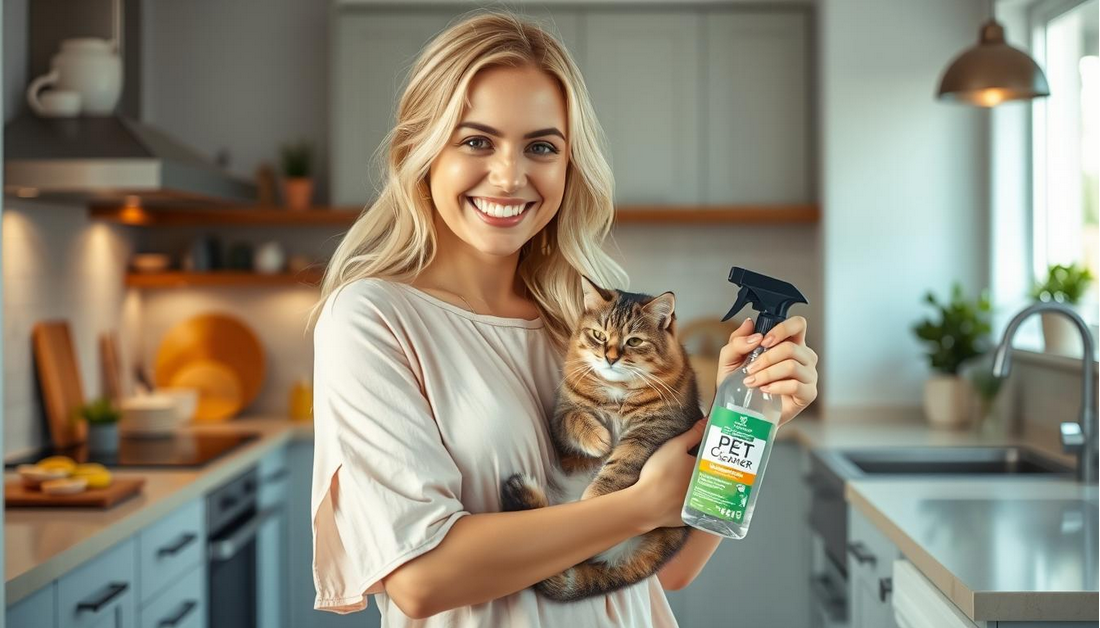
Natural DIY Cleaning Solutions for Cat Owners
For cat owners who prefer a hands-on approach, natural DIY cleaning solutions offer a safer alternative to commercial products. By using simple, non-toxic ingredients, you can create effective cleaning solutions that are gentle on your home and safe for your feline friends.
Vinegar-Based Cleaners
Vinegar is a versatile and natural cleaning agent that can be used to clean surfaces, remove stains, and eliminate odors. Mix equal parts water and white vinegar in a spray bottle to create a pet-friendly household cleaning solution. This solution is effective for cleaning countertops, sinks, and floors.
Baking Soda Applications
Baking soda is another natural ingredient that can be used for cleaning and odor control. Sprinkle baking soda on carpets and upholstery, let it sit for a few minutes, and then vacuum to remove odors and stains. You can also mix baking soda with water to create a paste for cleaning tough stains.
Essential Oil Safety Considerations
While essential oils can be a great addition to your cleaning solutions, it’s crucial to use them safely around cats. Some essential oils, such as tea tree oil, can be toxic to cats if ingested or inhaled in large quantities. Always dilute essential oils in water and use them in moderation. It’s also a good idea to consult with your veterinarian before using essential oils in your home.

Lemon Juice Solutions
Lemon juice is a natural disinfectant and deodorizer that can be used to clean surfaces and remove stains. Mix equal parts lemon juice and water in a spray bottle to create a cat-friendly disinfectant. This solution is effective for cleaning countertops, sinks, and mirrors.
By incorporating these natural DIY cleaning solutions into your cleaning routine, you can create a safer, healthier home for your cat. Remember to always test a small area before using any new cleaning solution to ensure it won’t damage your surfaces.
Cat-Friendly Cleaning Tools and Equipment
In addition to using non-toxic cleaning products, the right cleaning tools can further minimize your cat’s exposure to harmful chemicals. Using the appropriate cleaning equipment not only enhances the cleanliness of your home but also ensures a safer environment for your pets.
Microfiber Cloths and Mops
Microfiber cloths are effective for cleaning surfaces without the need for chemical-based cleaners. They are gentle on surfaces and can be used with just water, making them a safe choice for homes with cats. Microfiber mops are also beneficial for cleaning floors, capturing dirt and dust effectively.
HEPA Vacuum Cleaners
HEPA vacuum cleaners are designed to capture 99.97% of particles as small as 0.3 microns, including pet dander and allergens. Using a HEPA vacuum can significantly reduce the amount of airborne particles that your cat might inhale, contributing to a healthier environment.
Steam Cleaners
Steam cleaners use hot steam to clean and sanitize surfaces, eliminating the need for chemical disinfectants. They are particularly effective for cleaning areas where your cat spends a lot of time, such as their bedding and favorite resting spots.
Pet Hair Removal Tools
Tools designed for pet hair removal, such as lint rollers and grooming rakes, help keep your home free from cat hair. Regular grooming with these tools can also reduce the amount of loose hair that might be ingested during grooming, potentially causing hairballs.
Special Cleaning Challenges for Cat Owners
The joys of cat ownership come with their own set of cleaning challenges, from litter box maintenance to fur removal. Cat owners face unique tasks that require careful attention to maintain a clean, safe, and healthy home environment.
Litter Box Area Maintenance
One of the most significant cleaning challenges for cat owners is maintaining the litter box area. Regular scooping and changing of litter are crucial to prevent odor buildup and bacterial growth. Using cat-safe cleaners and following proper hygiene practices can help minimize health risks.
Hairball and Fur Removal
Cats shed their fur, leading to accumulation in homes. Regular grooming can reduce the amount of loose fur, but using the right cleaning tools, such as HEPA vacuum cleaners and microfiber cloths, is essential for effective fur removal.
Food Area Sanitation
Keeping food areas clean is vital to prevent bacterial contamination and maintain your cat’s health. Using non-toxic cleaners and sanitizing food and water bowls regularly are key practices.
Accident and Odor Management
Despite best efforts, accidents can happen. Having a plan for managing accidents, including using pet-safe odor removers, can help mitigate the impact.
| Challenge | Solution |
|---|---|
| Litter Box Maintenance | Regular scooping, cat-safe cleaners |
| Fur Removal | HEPA vacuum cleaners, microfiber cloths |
| Food Area Sanitation | Non-toxic cleaners, regular sanitizing |
| Accident Management | Pet-safe odor removers |
Emergency Procedures for Cleaning Product Exposure
When your cat is exposed to cleaning products, it’s essential to act quickly and follow the right procedures to minimize potential harm.
Immediate Steps to Take
If your cat has come into contact with a cleaning product, immediately rinse the affected area with plenty of water. For skin exposure, gently wash the area with mild soap. If your cat has ingested a cleaning product, do not induce vomiting unless directed to do so by a veterinarian.
When to Contact Your Veterinarian
Contact your veterinarian or a pet poison hotline immediately if you suspect your cat has been exposed to a toxic cleaning product. Be prepared to provide information about the product, the amount of exposure, and the time elapsed since exposure.
Creating a Pet Poison Control Plan
Having a plan in place can save valuable time in an emergency. Keep the phone number for the ASPCA’s Animal Poison Control Center (APCC) or the Pet Poison Helpline handy. Make sure all household members know what to do in case of an emergency.
Common Symptoms of Chemical Exposure
Symptoms can vary depending on the product and extent of exposure but may include vomiting, lethargy, difficulty breathing, or skin irritation.
| Symptom | Description | Action |
|---|---|---|
| Vomiting | Cat vomits after exposure | Monitor and contact vet |
| Lethargy | Cat becomes unusually sleepy or unresponsive | Seek immediate veterinary care |
| Difficulty Breathing | Cat shows signs of labored breathing | Emergency veterinary visit |
Conclusion
Maintaining a clean home is crucial for the health and well-being of your cat. By opting for the safest cleaning products for cat households, you can significantly reduce the risks associated with toxic chemicals. Pet-safe cleaning solutions are not only better for your cat, but they also contribute to a healthier environment for your entire family.
When selecting cleaning products, it’s essential to read labels carefully and look for eco-friendly cleaning products for feline households. These products are designed to be gentle on surfaces while being tough on dirt and germs. By making informed choices, you can create a safe haven for your feline friends to thrive.
Remember, a clean home is just the beginning. Regular grooming, a balanced diet, and plenty of love and attention are also vital for your cat’s overall health. By combining these elements with pet-safe cleaning practices, you can ensure a happy and healthy life for your cat.
FAQ
What makes a cleaning product safe for cat households?
A cleaning product is considered safe for cat households if it is made with non-toxic ingredients, is free from harsh chemicals, and is designed to minimize the risk of exposure to toxic substances.
Are eco-friendly cleaning products always safe for cats?
While eco-friendly cleaning products are generally considered safer for cats, it’s essential to check the ingredient list and look for certifications like EcoLogo or Safer Choice to ensure the product meets your standards.
Can I use disinfectants around my cat?
Yes, but you should choose pet-safe disinfectants that are specifically designed to be non-toxic to cats. Enzyme-based disinfectants and plant-based antimicrobial solutions are good options.
How can I minimize my cat’s exposure to cleaning chemicals?
To minimize your cat’s exposure, keep them away from areas being cleaned, use cleaning products in well-ventilated areas, and avoid using products that contain harsh chemicals or strong fragrances.
What are some common household cleaners that are toxic to cats?
Common household cleaners that are toxic to cats include those that contain phenols, ammonia, chlorine, and glycol ethers. Always check the ingredient list to ensure the product is safe for your cat.
Can I make my own cleaning products using natural ingredients?
Yes, making your own cleaning products using natural ingredients like vinegar, baking soda, and lemon juice can be a great way to ensure they are safe for your cat. Just be sure to follow proper safety precautions and test the products before using them.
What should I do if my cat ingests a cleaning product?
If your cat ingests a cleaning product, contact your veterinarian or a pet poison control center immediately. Keep the product label handy and follow their instructions carefully.
Are there any certifications I should look for when choosing cleaning products for my cat household?
Yes, look for certifications like EcoLogo, Safer Choice, or Leaping Bunny, which indicate that the product meets certain standards for safety and sustainability.







